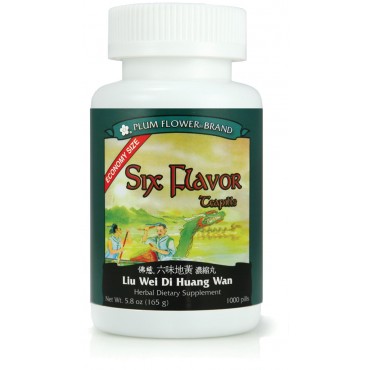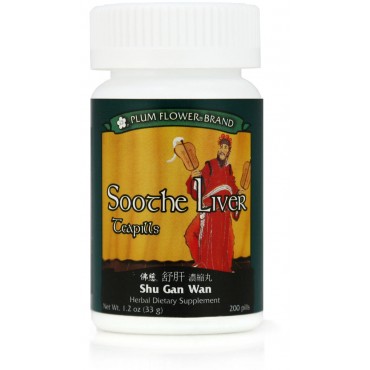Chinese Herb Examples:
Click for Descriptions
Simply put, in cases where there is more excess usually acupuncture alone is enough to move the energy to resolve the issue. However, in cases where a patient’s underlying issue is one of a deficiency it is important to supplement the body as well. Two major ways we can do this is with specific dietary recommendations and traditional Chinese herbal formulas.
Christina is trained to use Chinese herbal formulas that have been used for thousands of years that will specifically work to rectify the imbalance found according to a traditional Chinese medical diagnosis.
Yin Chiao
Also Spelled Yin Ciao

Contains: honeysuckle flower, forsythia fruit, Chinese mint leaf, phragmites rhizome, burdock seed, platycodon root, soy sprout, licorice root, schizonepeta aerial parts, and lophatherum leaf.
During the change of seasons, it is important to get plenty of rest and to use Chinese herbs at the first sign of coming down with a seasonal cold. Yin Chiao is one of the most relied-upon of all classic Chinese herbal formulas for staying off illness during changing seasons; especially the Fall → Winter and Winter → Spring change-overs. Yin Chiao has been shown to strengthen the immune system when the body’s defenses might be weakened.
Yin Chiao, developed during the Qing Dynasty (1644-1911), has been a staple of traditional herbalists and acupuncturists, and a household name in China, for hundreds of years. It is used for imbalances associated with seasonal changes and is one of the most valued of all classic Chinese herbal formulas.
Gan Mao Ling
Use in Early Stages of Cold/Sickness

Contains:Ilex asprella root, Evodia lepta herb, Chrysanthemum indicum flower, Vitex negundo herb, Isatis indigotica root, Lonicera japonica flower, Microcrystalline cellulose, Talcum, Magnesium stearate, Hypromellose
Gan Mao Ling can be used as a cold preventative alone or in combination with Yin Chiao at the yangming (early) stage of a cold or flu. It is also used alone or in combination with Zong Gan Ling for added relief of symptoms at the shaoyang (later) stages.
This product may be most helpful when a cold or flu is accompanied by a cough or sinus infection.
Suggested Uses are Gan Mao Ling on It’s Own -OR-
- or combined with Yin Chiao at the onset of cold or flu
- or combined with Zong Gan Ling for stronger relief of cold or flu symptoms
- NOTE: Use when cough or sinus congestion is present at the onset of a cold or flu
**May be especially useful when cold begins in the nose. For colds beginning in the throat add Yin Chiao.**
Pill Culing
Pronounced Pill “Curing”

This is one of the most famous Chinese herbal remedies. It helps with any kind of stomach upset, whether it’s due to food poisoning, motion sickness, overeating, or hangover. An excellent remedy to keep around and to travel with!! Great for when your stomach becomes upset after eating an unfamiliar food in another country!
May also be used as a preventative for gastritis, stomach upset and motion sickness. Take before plane/boat trips, long periods in the car or before eating problematic foods.
Bi Yan Pian
For Sinuses!

Bi Yan Pian combines multiple Chinese herbs that act to provide relief for sinus-related conditions. It disperses wind and expels toxins to relieve inflammation. Moreover, it dissolves phlegm (especially thick, yellow discharge), clears discharge and thus opens the nasal passages.
This herbal combination is simply amazing in how effective and fast-acting it is. Combined with acupuncture and other Chinese herbal formulas such as Yin Chiao and Gan Mao Ling, Bi Yan Pian provides a powerful piece to the puzzle of overcoming seasonal illnesses and can provide significant relief due to sinus pressure and constant “stuffiness”.
Liu Wei
A.K.A. Liu Wei Di Huang Pian

Contains:Radix Rehmanniae Preparata, Fructus Corni Officinalis, Cortex Moutan Radicis (Paeonia Suffruticosa), Rhizoma Dioscoreae Oppositae, Sclerotium Poriae Cocos, Rhizoma Alismatis Orientalis
Liu Wei Di Huang Pian (Liu Wei Di Huang Wan, Liu Wei Di Huang Tang, YinVive™, Six Flavor Teapills, 六味地黄片) is among the most regarded ancient Chinese herbal formulas. Today, it is most widely used to nourish Yin of the Yin-Yang principles and is the foundation for many other Chinese medicines. In traditional Chinese medicine, Yin is the feminine and negative principle of Yin-Yang whereas Yang is the masculine and positive principle. A robust interaction and balance of Yin-Yang forms the basis of good health. A diminished Yin can be shown as sweat, low fever, dizziness, tinnitus, emission, soreness in the lower back etc. Yin weakness occurs with age, sexual activity, or chronic disease.
Shu Gan Wan
A.K.A. Soothe Liver

Shu Gan Wan is primary for the treatment of the liver and the associated meridians. When “Qi” pathways are blocked, energy does not flow properly in your body and this causes stagnation.
Liver qi stagnation can cause an overacting stomach and spleen causing epigastric distension or pain, costal distension, indigestion, poor appetite, belching, nausea, hiccups, esophageal spasm, vomiting, ulcers and irritability. In addition Shu Gan Wan may be to used treat esophageal reflux, gastritis, duodenal ulcer, chronic pancreatitis, chronic hepatitis and gastrointestinal dysfunction.
Primary Traditional Functions
Dredges Liver Qi, Moves Liver Blood, Cools Liver Heat, Harmonizes the Liver and Stomach, Counters Ascent of Stomach Qi, Eliminates Food Stagnation, Relieves Pain
